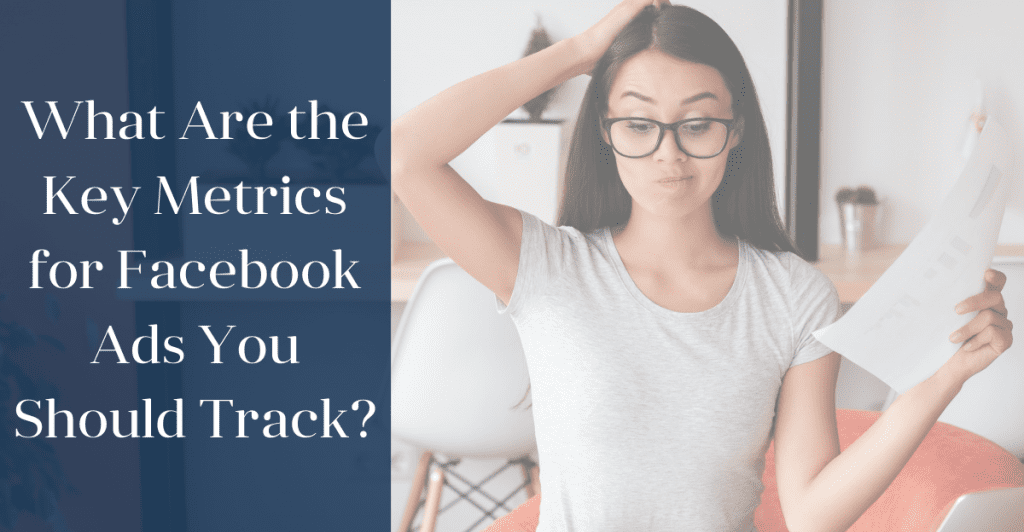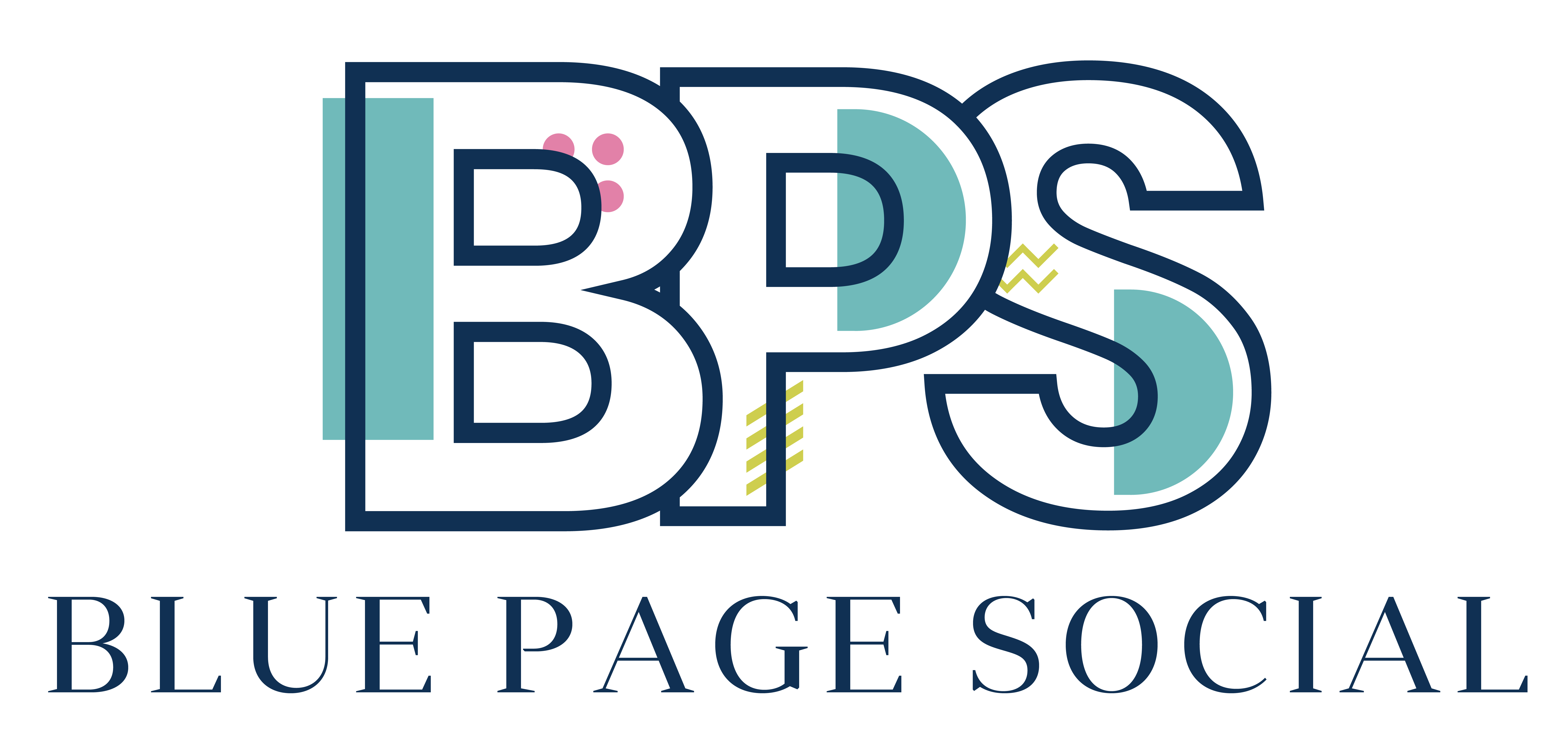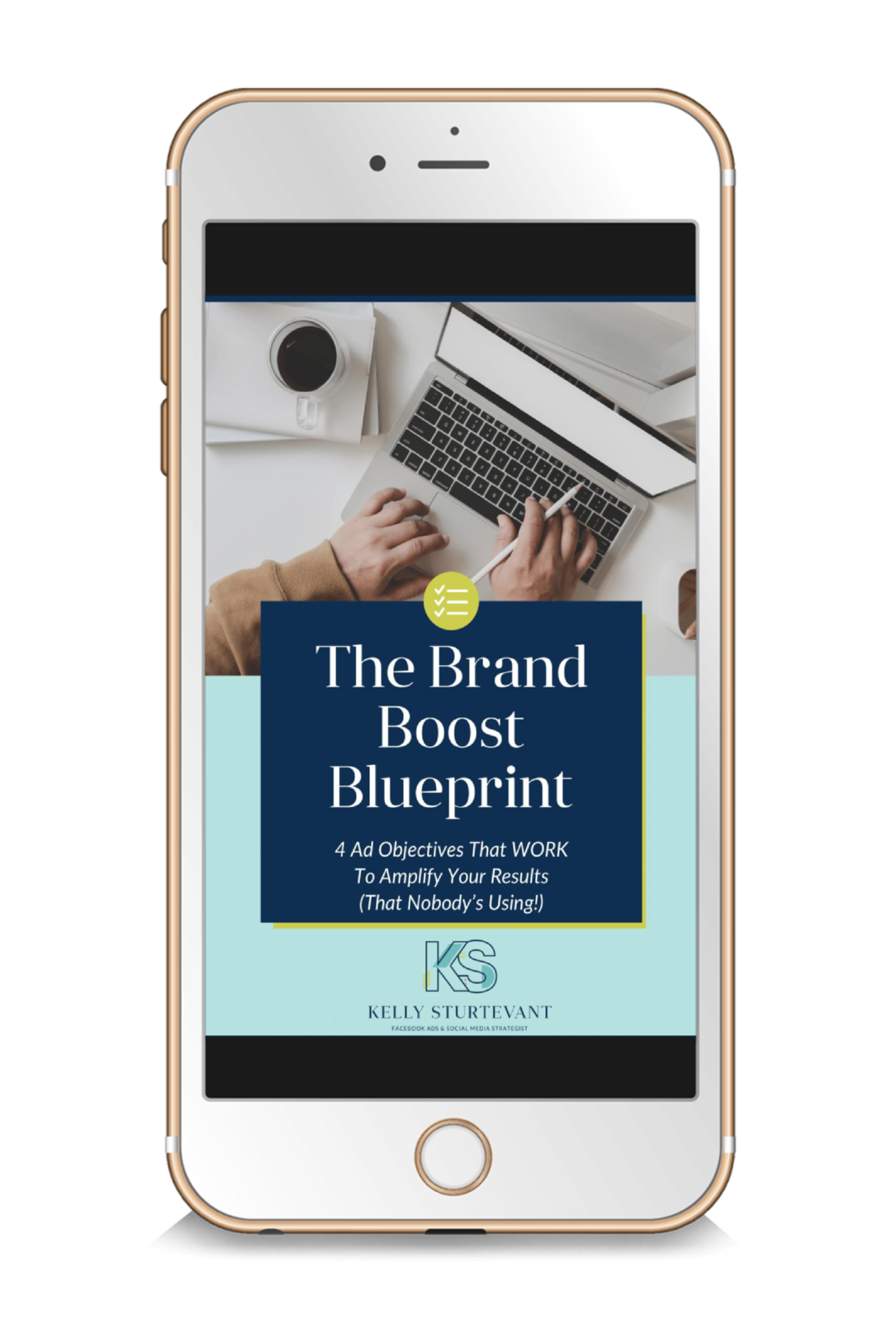
With so many pieces of data, it can be hard to know what key metrics for Facebook Ads you should be tracking. This can be a frustrating task, especially if you don’t understand what the data can tell you. The ads manager is full of a myriad of information that can help you understand the results of your ad campaigns, but if you don’t know what you’re looking at, it can make it hard to know what needs to be adjusted. In this article, we’ll review some of the key metrics you should be tracking and how they impact the success of your campaigns.
Key Metric #1: Link Clicks and Landing Page views.
These types of ads are one of the most common ads to run. They are used to get people to your landing pages for the cheapest way possible. They can be a great way to season your Facebook pixel and to warm up your cold traffic to your brand.
There are two types of traffic ads you can run, link clicks and landing page views. Generally speaking they’re both the same type of ad, as they are sending people to your websites. But the difference between the two is a link click ad is going to optimize for people to click the link in the ad, whereas landing page views is optimizing for people who are going to click the link to the ad and actually wait for that landing page to load. This difference can help you determine if there’s a problem with your site.
For instance if you ran a traffic ad and got 1000 link clicks and 500 landing page views, that could be an indicator that your landing page may have some loading issues, as people are not waiting for the page to load up before clicking away from the ad.
One of the reasons businesses run traffic ads is because it’s one of the cheapest ads out there giving you link clicks for a couple of dimes each, and landing page views for a little bit more. Just ensure you understand that traffic ads are not optimizing for anything but clicks.
Key Metric #2: Cost per Result
This key metric tracks exactly what it says; cost per result. These ads are conversion ads and they help to track things like the cost per email, the cost per lead and the cost per purchase. Tracking these metrics will help you to determine the overall success of your ad campaigns.
If you’re trying to build your email list with a free lead magnet, you’d want to acquire an email for as little as possible. (Average industry costs are about $1-5) As you start to run your first set of ads, you’ll want to see what the cost is to get someone to subscribe to your list, then work to better that result on your next campaign. If you’re finding the costs are not coming down, then it can be a good indicator you need to adjust either your copy or creative, or possibly both.
When it comes to acquiring webinar registrations or lead generation forms, these can be higher in cost than a typical lead magnet. Depending on your industry, it’s not uncommon to get webinar leads anywhere from $2-25 each and leads from $5-hundreds of $$.
Key Metric #3: Cost Per Purchase
When it comes to purchases, you really need to know what your average cart value is, and/or your lifetime customer acquisition is. This allows you to be able to determine how much money you can spend to bring that customer into your ecosystem.
So for instance if you had a product for sale at $27, then you could spend up to $26 to acquire that person and still turn a profit. (Ideally though, we want it much lower!) If you know your funnel has multiple upsells and one time offers, then knowing what your average cart value can help you to see what you could spend beyond that first sale in ads. You can learn more about Average cart value and its importance in Russell Brunson’s book, Traffic Secrets. (This is an affiliate link and I do receive a commission for any sales made through my link)
Knowing what your cost per purchase is will allow you to see what’s working, what’s not working and what those costs are to actually make that sale. If the cost per purchase is higher than what your lifetime customer acquisition is then there’s a problem with either the ads or the offer that needs to be fixed. Sometimes even a simple tweak in ad copy or audiences can bring this cost down, leaving more revenue for you in the back end.
Key Metric #4: Click Through Rate
The click through rate is the percentage of people who see your ad, and click through to the landing page. The average click through rate for most businesses is between 1-3%. Now that doesn’t mean anything lower than 1% is terrible, but it can show you where there may be room for improvement on your ads. Colder audiences can have a lower CTR than warm simply because warmer audiences already know, like and trust you so they are more likely to click on your ads.
Key Metric #5: Conversion Rate
Conversion rates allow you to determine the success of your offers. To determine what your conversion rate is, take the number of results that you got on the ad, divide it by the number of link clicks to the landing page, and multiply that by 100. For example you had 100 clicks to a webinar registration, and 30 people registered, you have a conversion rate of 30%.
Depending on what your ad objective is, the conversion rate can be anywhere from 5% to 50%. Email opt ins tend to hover around the 15-30% for a basic lead magnet and webinar registrations around the 20-50% rate. If your ads aren’t falling within the average benchmarks, it’s a good sign you need to make some adjustments. This can mean adjusting the ad itself with copy or image changes, audience targeting changes or quite possibly it can indicate there are some problems on your landing page and those need to be adjusted.
Key Metric #6: Frequency
Our final metric is frequency. This is a number indication of how many times a person has seen your ad. Now, businesses get scared off by frequency because they think that if their audience is seeing their ad too many times, they will lose that customer due to annoyance. Most of them will turn off ads when they hit a frequency higher than 2 (meaning the average person saw their ad twice, but depending on what the objective of the ad is you may actually want a higher frequency so it stays in their feed longer.
For instance, if you had a high end product or course with a smaller audience size, your frequency rate could be much higher than 2. This may not be a bad thing as these types of offers can require multiple touch points for someone to click the link. If your ads still aren’t converting, it could be a sign of audience fatigue and could require you to refresh your creatives and try again.
Understanding just these basic metrics will give you enough information to see how well your ads are performing for you. But keep in mind, that a poor performing ad is not always the reason the offer isn’t converting. When you understand the data and what it is telling you, you will be able to see if there are issues with your landing pages, or if the ads are in need of changes. Pay attention to what the data tells you and adjust accordingly.
P.S
Want to step up your social media presence, but don’t want to spend hours a day creating content? My Social Media 365 Content Machine will get you set up for one full year of posts, designed to follow the three E’s. Get access here: www.bluepagesocial.com/365
P.P.S
32 Digital Marketers have come together in the Thriving Business Owners Bundle packed full of amazing trainings, resources and strategies to help you grow. Grab the Bundle here: https://bit.ly/businessownersbundle (This is an affiliate link and I do receive a commission for any sales made through my link)
P.P.P.S
My Facebook Ads Kickstart course is an amazing beginners resource for any business owner getting ready to run Ads. To learn more: https://www.bluepagesocial.com/kickstart/
Want to chat with me about my services? Apply to work with me!

